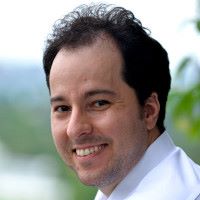Teaching has always been a rewarding experience, allowing me to share my knowledge with students while also learning from them in return. For this reason, I adhere to the active learning pedagogical approach to ensure that students receive the most effective knowledge transfer from me. My dedication to active learning originates from a reflection on my education and pedagogical training. I primarily followed an academic curriculum in Switzerland and Singapore, where a passive learning pedagogical approach prevailed during my studies. Although I passed the exams, it was difficult to discern the specific learning outcomes achieved by the end of the course. I realized the importance of encouraging students to take a more proactive role in assessing their learning after being introduced to active learning at the Centre for the Development of Teaching and Learning at the National University of Singapore (NUS), as well as during the University Teaching Qualification program at Delft University of Technology (TU Delft). During these training sessions, I observed the benefits of dedicating more lecture time to student questions, discussions, responses to instructor queries, interactive polls, and group activities. I also realized that discussion forums are valuable tools for students to ask questions after class and for instructors to assess their learning.
My teaching training focused on developing clear learning outcomes and establishing effective structures for both formative and summative assessments. Despite receiving guidance on preparing lectures in advance, I faced challenges in fully implementing these strategies while co-teaching the course Autonomous Sustainable Buildings at Carnegie Mellon University (CMU). After being given the opportunity to lead a lecture, I concluded that an instructor cannot rely solely on pre-prepared course materials, no matter how well-structured they may be. The instructor should also demonstrate the ability to improvise in order to adapt the materials throughout the duration of the course. The reason is that students’ responses to course materials are difficult to predict and can vary between groups. Therefore, I believe instructors should be able to adapt lectures and assignments based on student feedback.
I also believe that teaching should extend beyond the understanding and application of the course materials. Through teaching, I aim to foster students’ critical thinking and creativity. My belief in the importance of critical thinking and creativity was solidified during my time as a teaching assistant for the course Digital Construction at NUS and further strengthened while co-teaching the course Autonomous Sustainable Buildings at CMU. Since then, I have sought to help students realize that scientific knowledge is constantly evolving, has its limitations, and requires innovation. I hope they recognize the importance of continually questioning information and staying updated on scientific advancements. Furthermore, they should feel confident in proposing their ideas and visions on a given topic. By cultivating students’ critical thinking and creativity, I hope to facilitate their access to higher education and industry. I also view critical thinking and creativity as opportunities to enhance my knowledge through interactions with students.
Teaching experience
- Teaching Assistant, Modeling wind and dispersion in the urban environments (GEO5051), Faculty of Architecture and the Built Environment, Delft University of Technology, Spring 2025 (Instructor: Clara Garcia-Sanchez)
- Co-Instructor, Autonomous Sustainable Buildings: From Theory to Practice (12-770), Department of Civil and Environmental Engineering, Carnegie Mellon University, Spring 2024
(Main instructor: Mario Berges) - Teaching assistant, Digital construction (PF1103), Department of Building Science, School of Design and Environment, National University of Singapore, Spring 2019
(Instructor: Miller Clayton) - Teaching assistant, Project in software engineering (CS 13X008), Department of Computer Science, Faculty of Sciences, University of Geneva, Spring 2010
(Instructor: Marchand-Maillet Stephane) - Teaching assistant, Software engineering (CS 13X003), Department of Computer Science, Faculty of Sciences, University of Geneva, Fall 2009 (Instructor: Marchand-Maillet Stephane)
